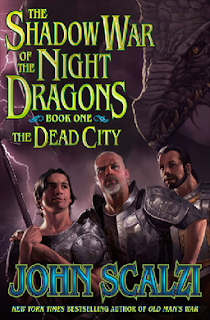过去几年间,雨果奖某些奖项险些因未满章程规定的最低投票数而遭取消。
 |
世界科幻大会已非上世纪六七十年代可比。
(图片来自 fanac.org) |
令人感叹的是,这些濒危奖项的受欢迎程度并没有出现明显的滑坡。它们只不过是赶不上其他更具大众化影响力的奖项热度的快速增长。因此,说它们的境遇是最佳长篇小说、最佳戏剧表现等大牌奖项受捧带来的惩罚,似乎不为过。
雨果奖的的评选和颁发是由《世界科幻协会章程》约束的。这份章程的3.12.2款对某奖项空缺的的条件之一做出了规定如下。
3.12.2: 当特定类别的有效选票总数(不包括首先为“空白奖”投的选票)总数少于总数的百分之二十五(25%)时,既属“空白奖”。
2021年最终入围名单的总投票数为2362张。因此,如果某个奖项在终选时获得的总投票数少于591张,该奖项将公布为“空白奖”。最佳粉丝演播奖得到了632张选票,勉强超过了25%的下限。最佳粉丝杂志 (643), 最佳长篇作品编辑 (667), 以及最佳粉丝作者奖 (680) 都面临跌落“空白”深渊的境地。为了感受这些数字的含义,请考虑如下事实:在“25%条款”问世的1963年,任何一个奖项总投票数都没有超过591. 世界科幻大会在成长,它需要在会员群体愈发广大的条件下寻求有效衡量奖项代表性的途径。
我们还观察到一个值得注意的现象。如果仅仅多出来159名参加了最佳长篇小说评选、但同时未能为最佳粉丝杂志投票的会员,那么 Nerds of a Feather 就无法摘获名至实归的雨果奖了。这就体现了当前投票规则的一个漏洞:略微小众一点的奖项可能成为高规格大奖功名之下的牺牲品。
 |
最佳长篇作品编辑奖的不二人选黛安娜·M·傅,
险些因3.12.2条款与奖项失之交臂。
(图片来自 Rokne & Wakaruk) |
泛读一下该条款出现当年的一些同人杂志,我们可以看到如此的现状应该不是当时提出这项条款的本意。那时候,大家的牢骚是有的人可能靠着不到10张票获得雨果奖。如果某个奖项有多达500人参与投票,看起来不应该成为这种担心的对象。
章程3.12.2款的历史已经有些年头了,而且其发展历程也很有意思。因为1963年参加雨果奖投票的人数异常得少,随后1964年的章程里出现了这一条款的原始版本。当时的规定里并没有特定的下限,而是授权雨果奖管理会以“明显缺乏投票者的关注”为由取消某个奖项。
我们要明白,这条规则加入章程的年代,参与提名过程者不满200人,最终评选的投票人数不及300. 为20世纪60、70年代特定情况制定的投票规则,在2020年代的现实条件下未必仍适用。
因为文献不足之故,我们未能找到该规定的现行具体条文是什么时候制定的,不过范围就在1978、1979年间。就我们所知,这条规则的明确形式出自本·雅罗 (Ben Yalow) 之手。他提出将门槛定在25%,以增进评选过程的透明度,并确保奖项不会因为任何一届委员会随机的主观意念就遭剔除。
“雨果奖管理委员会有很大的自由量裁权,但他们宁可不动用。因为一旦出手,只能给科幻大会招来批评。”雅罗这样解释道。“所以,将规则制定得更具体,避免粗略的方针指引,可以让委员会从舆论的笔尖下脱身出来。”
在1970年代末,这是一项重要而积极的改进,25%的下限在当时是合理的。不过40年间时过境迁,这一限制也该改改了。
 |
传奇人物本·雅罗是《世界科幻协会章程》
的重要贡献者,他起草了当前版本的3.12.2条款。
(图片来自 Rokne & Wakaruk)
|
整个1970年代,每年雨果奖终选投票人数平均约800人。这段时期,“空白奖”的下限可以估计为200票左右。如果某个奖项只能引来200票,那么认为它缺乏必要的关注度是可以理解的。
这条规则的另一时代背景是当年各个奖项投票数的分布比现在要均匀很多。1980年是雨果奖完整的投票记录有据可查的第一年。那一年,收到投票数最少的奖项是最佳粉丝作者奖。同样是那一年,在1788名投票者中有884人参与了最佳粉丝作者评选,因此该奖项的参与率有49%.
四十年过去了,参与最佳粉丝作者投票的人数没有显著变化,但参与的比例下降了,因为参加其他虚构作品类别的投票人数大幅增长。这就是说,导致类似奖项面临濒危的境地的原因,并不是关注的人数下滑,而是其他奖项的活跃程度增长。
说白了,最佳长篇作品编辑奖该不该评出,按道理不应该由最佳戏剧表现奖的参与人数来决定。
我们的建议是,与其使用百分数来判定某奖项缺乏关注,世界科幻协会应采用固定票数作为限定标准。当然,就和“25%条款”一样,这一票数下限的设置也会有一定的任意性。但我们认为,这个数字可以调节到能体现显著的粉丝群体持续性关注的水平上。显然,这个限度应高于10人。但同时,我们的观点是,假如在可以想见的将来,某届有3000人参加雨果奖投票的大会上按现有规则需要750票才能保住一个奖项,那么我们的固定票数限额不应该高到如此地步。这一具体数字应定期评估;每5年一次是比较可能的方案。
另一种解决方法是改变参与率低于25%的奖项的处理方式,要求世界科幻协会的雨果奖委员会对其进行重审而非自动取消,以防参与该奖项提名和评选过程的会员之劳动付诸东流。
雨果奖的部分奖项广为大众所知,这是值得欣喜的事情。不过,雨果奖的评选过程亟需与时俱进,既与大众的拥护相适应,同时又不至牺牲更小众的奖项。
当然,这些建议如果采纳,会给世界科幻协会雨果奖评委带来更多工作任务。然而,这样的工作有益于世界科幻大会使命的实现,并将帮助我们保证其程序真正建立在参与的基础上,体现出代表性和民主精神。
复言之:同人类奖项不应成为文学作品类奖项成功背后的牺牲品。
(注:原标题 The 25 per cent solution, 取自福尔摩斯系列作品之 The seven-per-cent solution. 英文中 solution 一词有“溶液”和“解”的双关涵义。)
本杂志编撰团队感谢雨果奖提名,并借此机会挑选了2022年度若干得意之作翻译成中文,以飨参加本年度世界科幻大会的中国友人。译者:Zoë C. Ma [https://zoe-translat.es/]




















